A Trip Down Brick Lane
Sustainable styles make a comeback in London's mecca of vintage fashion
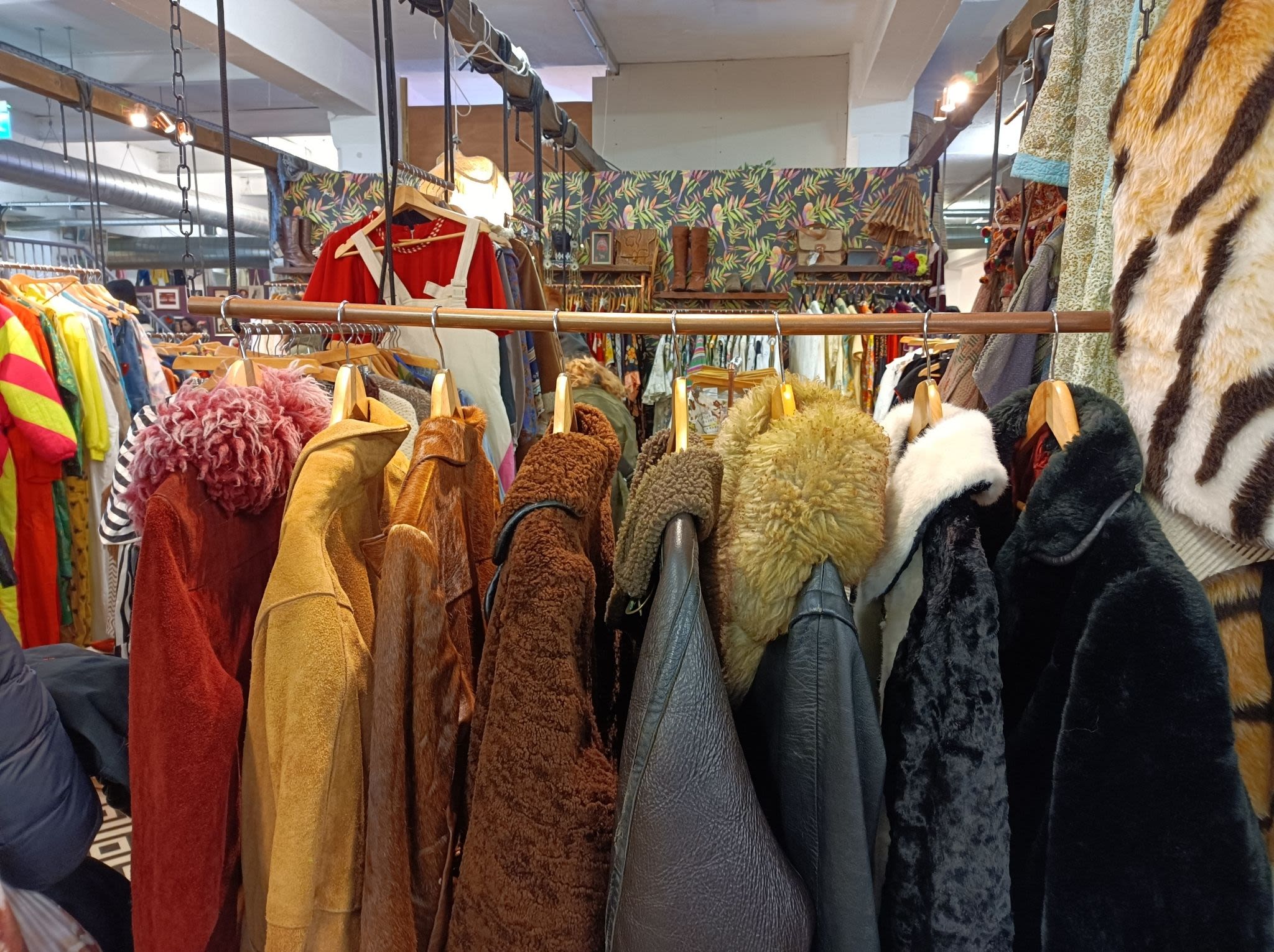
Below the graffitied streets of East London, a labyrinth of over 100 vintage clothing stalls buzz with a new wave of eco-conscious shoppers. Second-hand clothing enthusiasts rummage racks of fashion from bygone eras in the Brick Lane Fashion Market, a vintage enthusiast's dream.
Brick Lane itself is an evolving canvas. What was once farmland has served as the stage for the rise of 17th-century breweries, infamous impoverished conditions, Jack the Ripper, immigrants from Jewish communities to refugees from Bangladesh, and the world-famous artist Banksy.
Even today the street pays homage to the area's dynamic past through the fusion of architecture, food and layers of colourful and evocative street art by generations of Londoners.
Brick Lane exudes an air of experimentation and youth, from the street itself to the basement of the old Black Eagle Brewery, the Brick Lane Vintage Market location.
And the shoppers inside are looking to replicate the essence of Brick Lane with unique clothing that counters the status quo and survives the test of time.
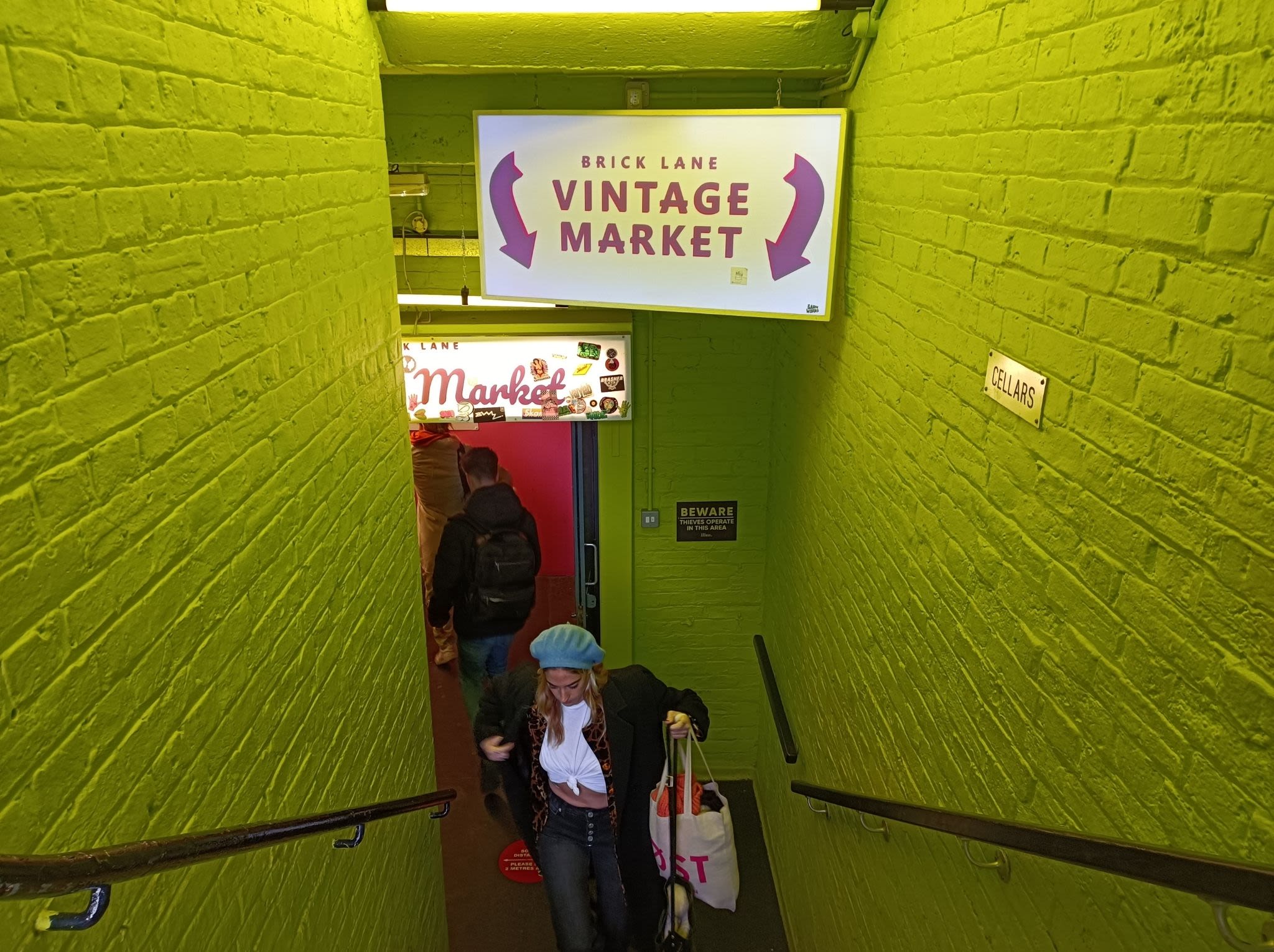
Descending the market's fluorescent yellow staircase, the sound of the Beatles hit “Strawberry Fields Forever” draws shoppers into a vintage lover's haven.
Customers take in an array of suede fringed vests, bedazzled shoulder pads and an expanse of denim, leather and Burberry.
The space contains a kaleidoscope of clothing from the 1920’s and covers every era up until the early 2000’s. The prices are as varied as the styles themselves. Sale racks sell vintage from as little as 10 pounds, while collectors watch over high-end fashion worth hundreds, still a bargain compared to off-the-runway prices.
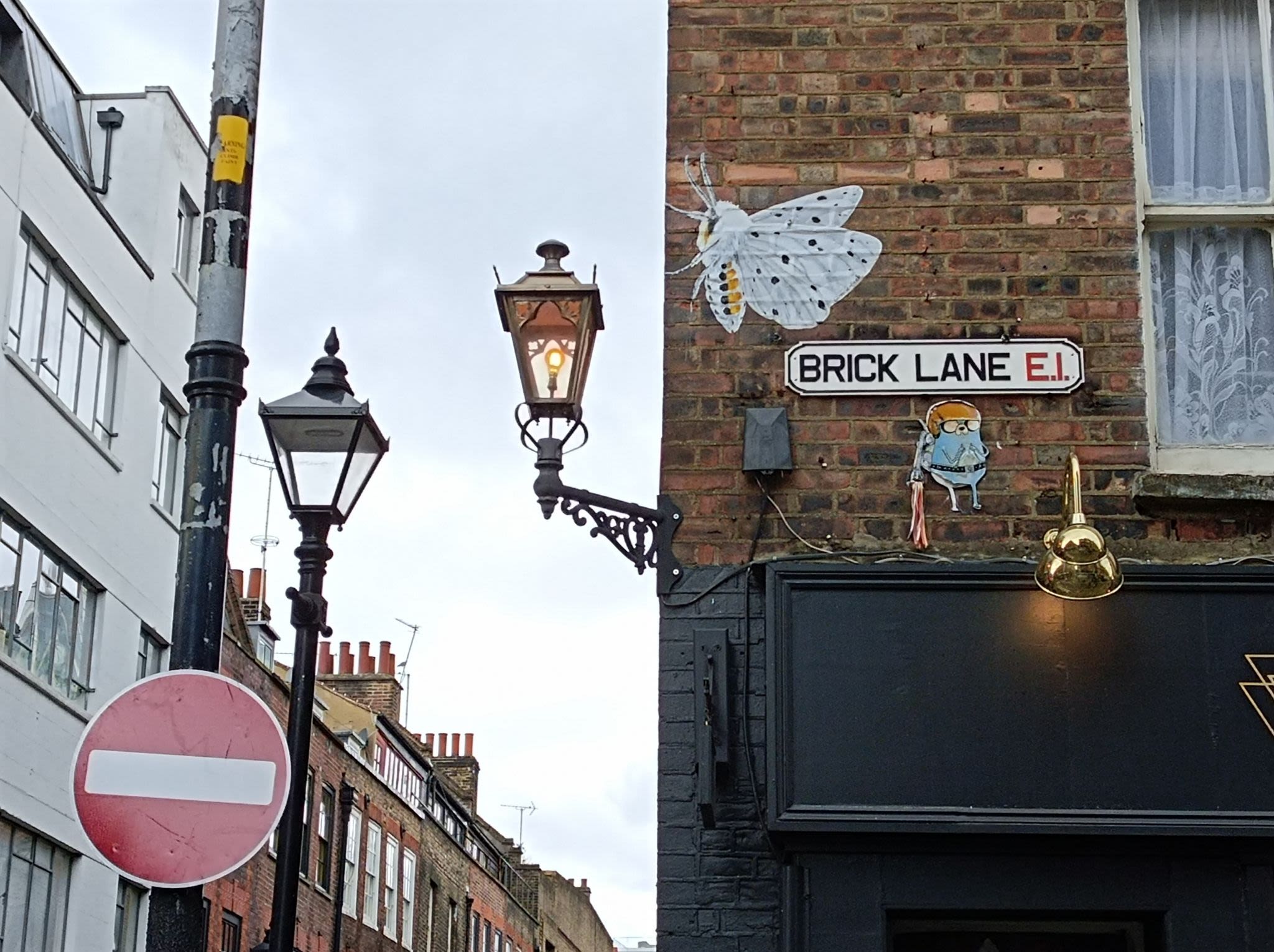
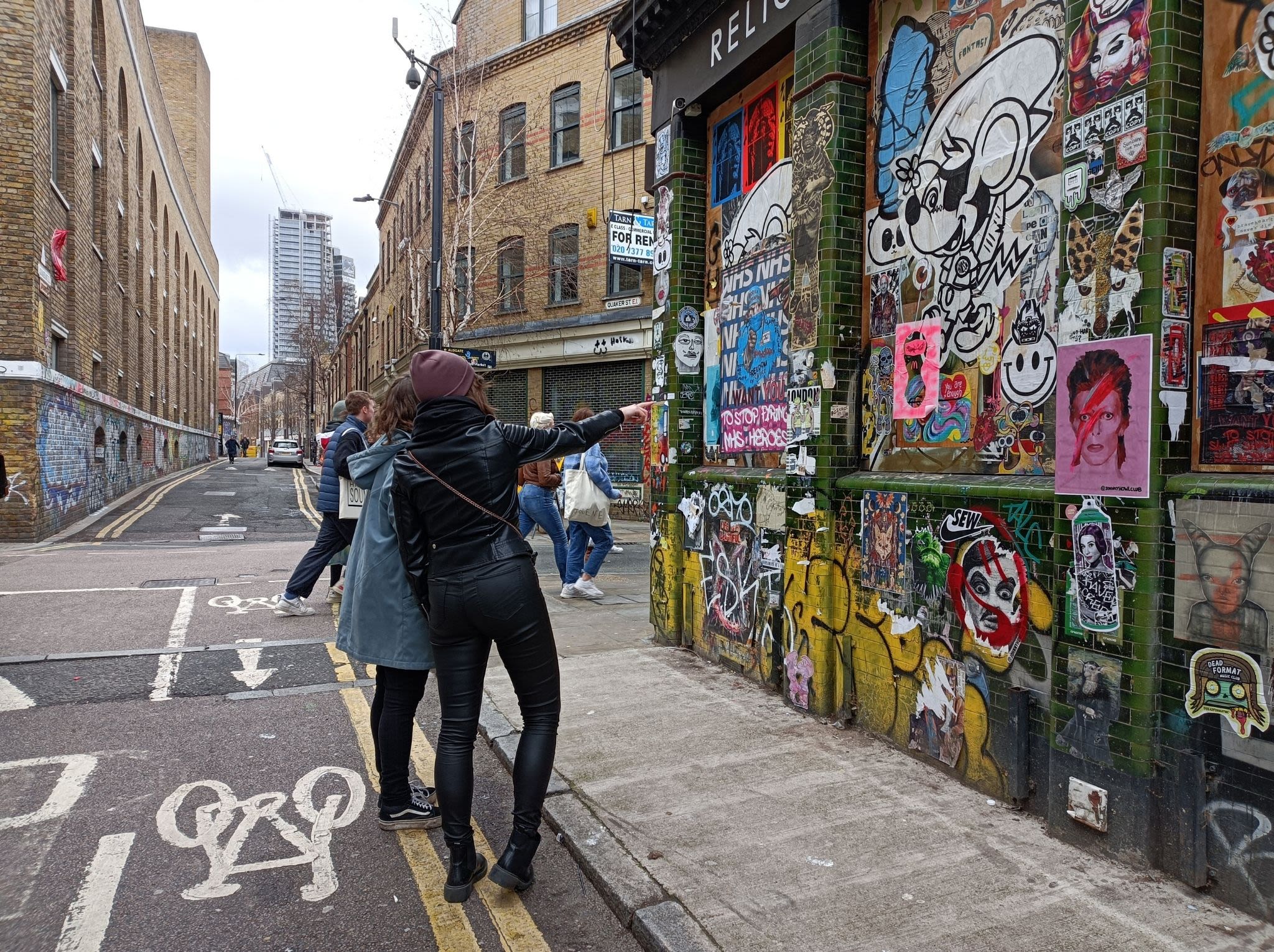
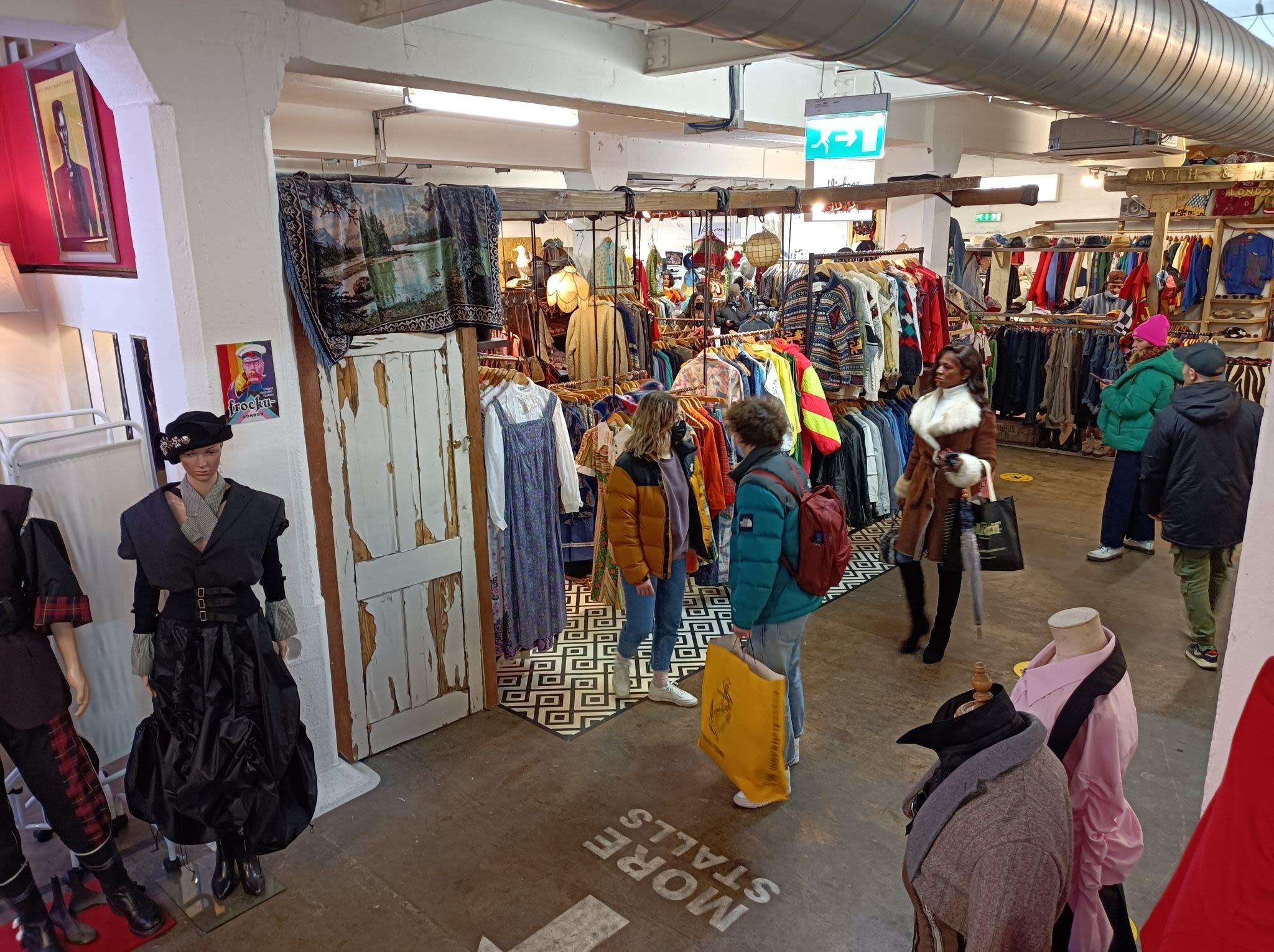
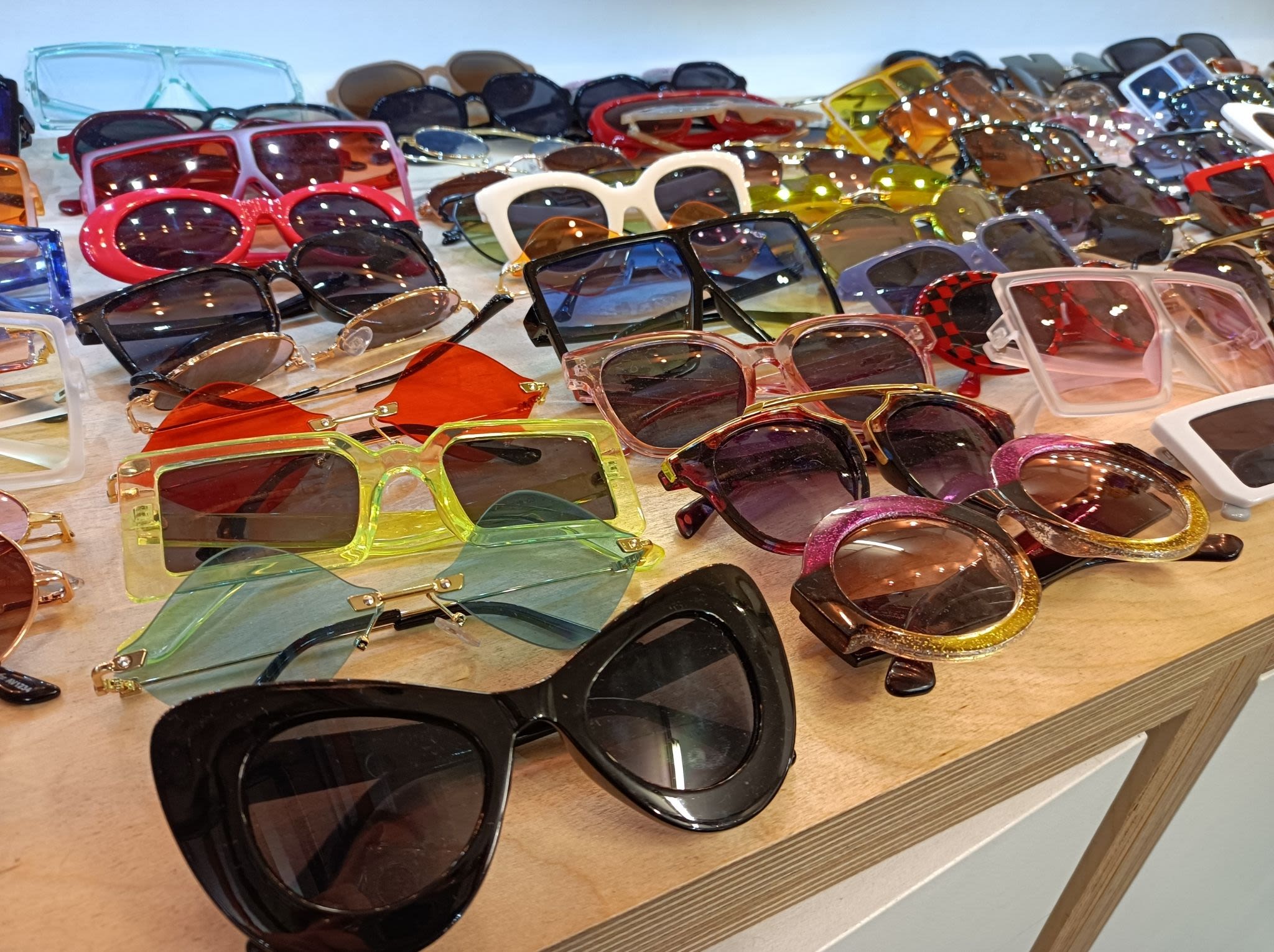
The stall Myth and Mayhem specialises in Americana vintage from the 80’s and 90’s.
On the racks are a variety of east coast styles and west coast winterwear with a considerable range of vintage Levi and denim.
“You can get wrangler jeans from the 70s or the 80s that are 35 to 40 years old, so why spend 80 to 100 pounds on a pair of jeans that are going to last you two years? "
"Every time you wash them the elastic snaps and they change shape,” says store manager Terry.
Through his experience in the British army, Terry discovered an appreciation for the quality of military apparel, a standard reflected in the clothing at his friend's vintage shop.
With vintage fashion becoming more mainstream over the past few years, he believes these markets offer consumers the opportunity to feel the materials and find unique pieces of higher quality than popular retailers such as Zara, Gap and H&M.
Like many of the shoppers, store workers and business owners in the vintage market, Terry has observed how fast fashion has changed the way consumers value clothing.
Coined by the New York Times in 1989, the term fast fashion defines the rapid mass-market production of new and inexpensive fashion trends.

By 2018 the fast fashion industry was worth $2.4 trillion US dollars and employed 300 million people, according to the UN Fashion Alliance.
In the same year, Clothes Aid reported that 350,000 tonnes of clothing was sent to landfills in the UK alone.
However, with this growing awareness of sustainability, Terry said he has also seen a positive shift in his customer base.
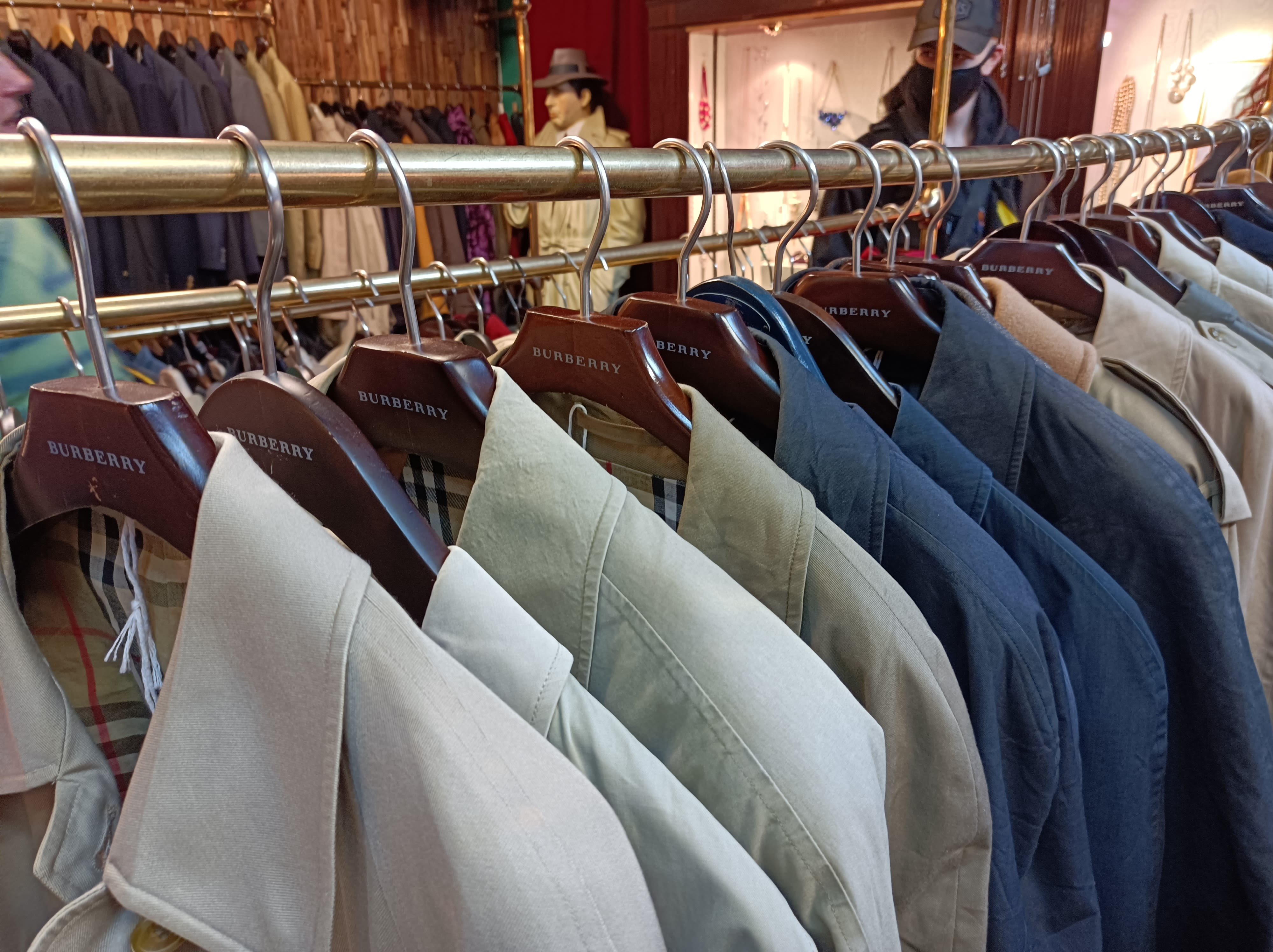
In Urban Trenches, a stall that has predominantly sold vintage Burberry for over seven years to agents all over the world, retail assistant Mark Bailey says he has noticed the same changes.
“I think a big part of the popularity of vintage wear is this sort of eco factor where it’s the opposite to fast fashion, it’s buying clothes that will last a long time,” he said.
Fast fashion is responsible for more than fabric waste. The industry consumes 215 trillion liters of water per year and contributes to 2 - 8 % of the world's greenhouse gas emissions.
In addition, companies in fast fashion are pressured to reduce costs across all sections of the supply chain. This can lead to dangerous working conditions where employees receive low pay for long hours.
And this is no longer breaking news. In 2013 an eight storey garment factory in Bangladesh collapsed, killing over 1,000 workers producing clothing for Primark and other big-name fast fashion brands.
Since then, more reports have emerged including The New York Times investigation of Fashion Nova workers in Los Angeles. Staff were reportedly being paid US$5 per hour.
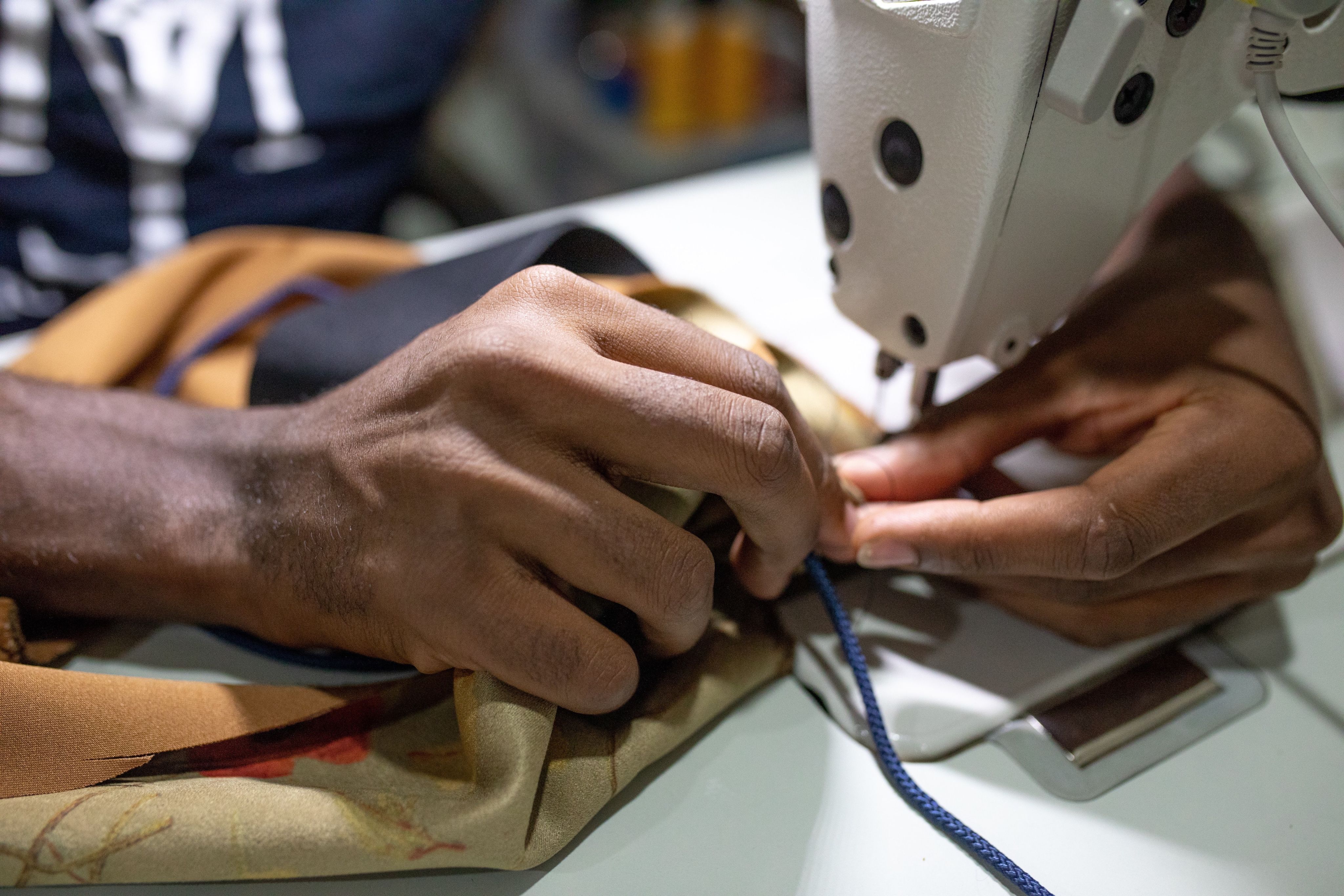
While fast fashion still maintains a growing customer base through the convenience of an increasing online presence, new platforms to buy and sell second-hand clothing are rising competitors in the online fashion market, fuelling the second-hand and vintage fashion craze.
Companies such as Depop, Thredup and Vinted are enabling the public to create online stores to buy and sell second-hand clothing from home.
Simultaneously, Y2K stylists and vintage fashion influencers are inundating TikTok and other social media platforms with throwback looks.
Thredup has predicted the second-hand market will double to US$77 billion by 2025.
Yet, according to the shoppers at the Brick Lane Vintage market, while they often scrolled through these apps, they prefer the market experience.
Caz Churchill the owner of Alley Cat says vintage fashion is constantly changing. She adds that during the pandemic, students were her main customer base, as she sorts through racks of clothing wearing a pair of Bowie-esc black and white striped pants.
She started selling vintage in the 80’s and when cheap fashion arrived at the Camden markets, vintage was laughed at and considered fancy dress.
Over the last few years she has seen people more open to buy vintage and ready to embrace past fashion trends again.
“Moving here [Brick Lane] a lot more people are into vintage, a lot more locals. There are tourists looking for vintage as well,” she says.
“Now shopping vintage is more sustainable, it’s unique and it just lasts so much longer. I mean the clothes made today, a lot of it is just not very well made. If you get proper vintage, I mean, look how long it’s lasted.”
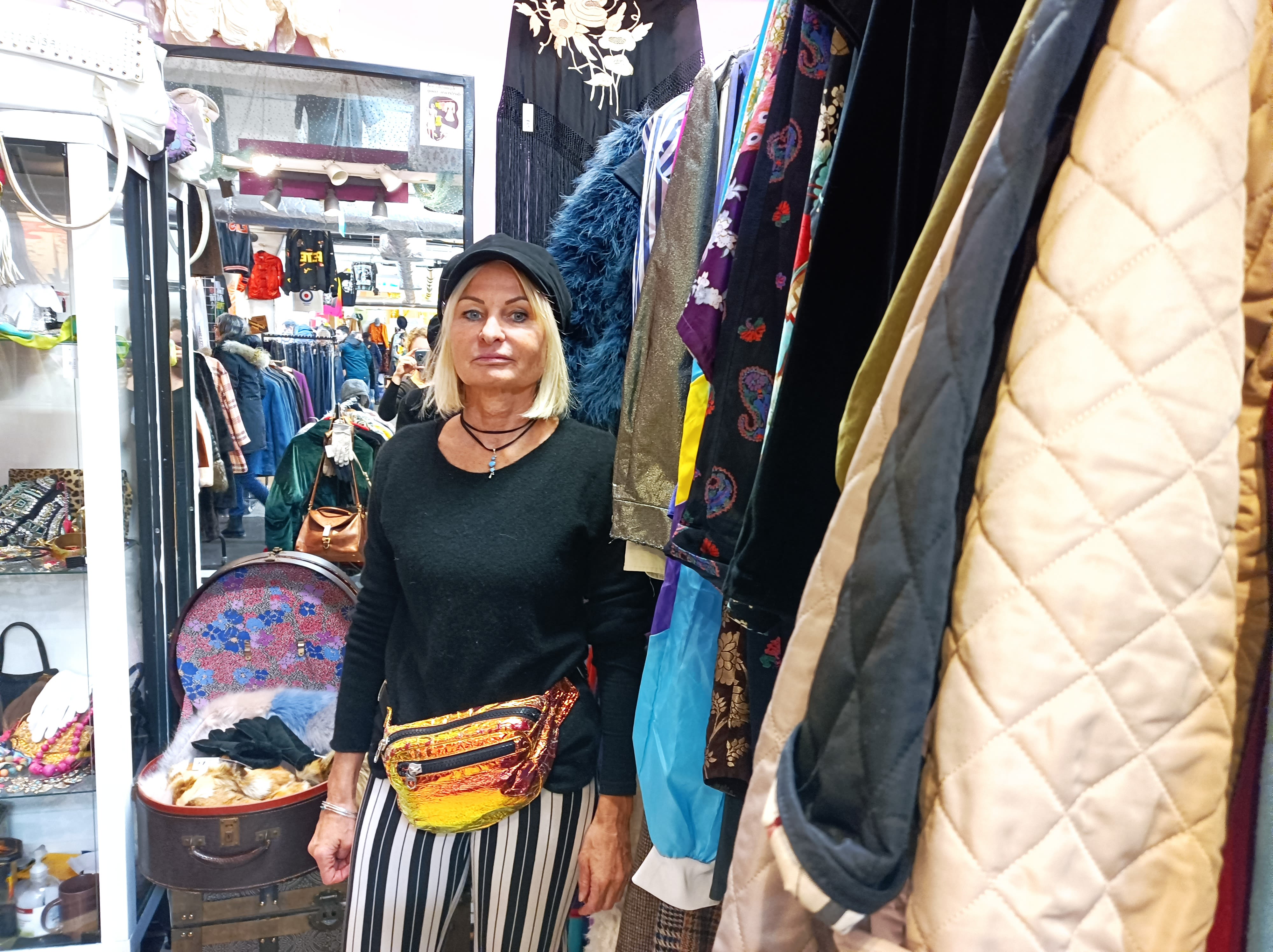
And, while fashion trends continue to evolve, the Brick Lane Market is embracing the current wave of sustainably-minded customers, stallholders hope for the continued rise of vintage shopping.
You can visit the Brick Lane Vintage Market from Monday to Saturday 11am to 6pm and Sunday 10am - 6pm.
Weekends are the best time to visit when clothing and food stalls spill out onto Brick Lane.
You can find the Brick Lane Vintage market in the basement of the Truman Brewery building.
For more information head to the market's main website.
And, if you can't find what you are looking for there, try some of the boutiques found on Brick Lane.
Rokit Vintage is a popular London chain, containing a a large collection of pre-worn vintage and designer styles, Atika provides vintage clothing, upcycled styles and vintage-inspired pieces and Hunky Dory vintage focuses on 20th-century frocks and accessories for men and women.
Produced by Journalism and Sports Media students;
Published by the Faculty of Arts and Design, University of Canberra

